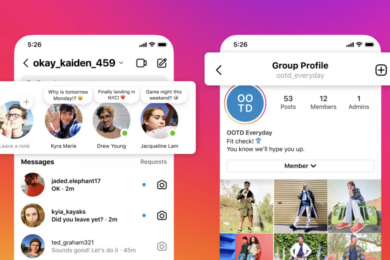
Understanding the Importance of BLOG TOPIC for Your SEO Strategy: Why Your Blog Topic is Important for SEO Strategy?
In today’s fast-paced digital world, every business needs an optimized website to rank higher on search engines. The blog is one of the most critical components of a website. It provides an opportunity to create fresh, relevant content and attract new visitors. Therefore, it is essential to choose the right blog topic as part of your SEO strategy.
Choosing the Right Blog Topic
When choosing a topic, consider your target audience and what they may be searching for online. Brainstorming ideas and conducting keyword research are two excellent ways to determine the ideal topic for your blog. Google Keyword Planner, Google Trends, and SEMrush are some reliable tools to help you with your research.
You also want to ensure that your blog topic aligns with your brand, products, and services. Avoid creating content that is irrelevant or misleading. Instead, create high-quality, informative content that provides value to your readers.
Benefits of Choosing the Right Blog Topic
Choosing the right blog topic can increase your website’s visibility, attract more organic traffic, establish you as an industry expert, and generate leads and conversions. By providing relevant, valuable content, your blog can also improve user engagement, reduce bounce rates, and increase the time visitors spend on your website.
In conclusion, choosing the right blog topic is crucial for your SEO strategy. By researching your target audience and selecting relevant, engaging topics, you can attract new visitors, build your brand, and establish yourself as an industry authority.
KEYWORDS: How to Incorporate Them Effectively in Your Blog Content
Introduction to Keywords
Incorporating keywords in your blog content is an essential aspect of search engine optimization (SEO). Keywords are the phrases or terms that people use to search for topics they are interested in online. By including relevant keywords in your blog post, you can increase the chances of your content appearing on search engine results pages (SERPs) and drive traffic to your site.
Identifying Relevant Keywords
Before you start writing your blog post, it is important to identify the relevant keywords you want to target. There are several tools available online that can help you with keyword research, such as Google AdWords Keyword Planner, SEMrush, and Ahrefs. These tools can provide you with insights into the search volume, competition level, and related keywords for a particular topic.
When choosing your keywords, it is crucial to consider the user intent behind the search. What are the users looking for when they type in those keywords? Is it information, a product, or a service? Understanding the intent behind the search can help you create more targeted content and improve your chances of ranking higher on SERPs.
Incorporating Keywords Effectively
Once you have identified your keywords, it’s time to incorporate them into your blog content effectively. However, it’s important to use them in a way that does not compromise the quality of your content. Stuffing your blog post with too many keywords can lead to a poor user experience and hurt your SEO rankings.
Try to include your primary keyword in the title of your blog post and in the first paragraph. You can also sprinkle them throughout the content, but make sure they fit naturally and do not disrupt the flow of your writing. Additionally, using variations of your primary keyword, also known as long-tail keywords, can help you rank for multiple related search terms.
In conclusion, incorporating relevant keywords into your blog content is crucial for improving your SEO rankings and driving traffic to your site. By identifying the right keywords, understanding user intent, and using them effectively, you can create content that resonates with your audience and helps you achieve your blogging goals.
Creating Engaging Content that Resonates with Your Target Audience
Understanding Your Target Audience
Before creating your content, it is important to understand who your target audience is. This means gathering information about their demographics, interests, pain points, and behaviors. By doing so, you can create content that resonates with them and adds value to their lives.
Using Storytelling Techniques
Storytelling is a powerful tool that can help you engage with your audience and make your content more memorable. Instead of simply presenting facts and information, try to weave a story around your message. This could involve sharing personal experiences, using analogies or metaphors, or creating a relatable character.
Providing Actionable Tips and Advice
Another way to create engaging content is to provide your audience with actionable tips and advice that they can apply in their own lives. This can be done through how-to guides, tutorials, or lists of practical tips. By giving your readers something of value, you are more likely to keep them engaged and coming back for more.
BLOG TOPIC Best Practices: Dos and Don’ts to Keep in Mind
Dos
- Do focus on a specific topic or niche to establish your expertise and credibility.
- Do write with your target audience in mind and use language that resonates with them.
- Do create engaging, informative, and valuable content that readers can relate to.
- Do maintain a consistent publishing schedule to keep your readers engaged and coming back for more.
- Do promote your blog on social media platforms to increase your reach and attract new readers.
- Do optimize your blog for search engines by including relevant keywords in your content, title tags, and meta descriptions.
- Do engage with your readers by responding to comments, asking for feedback, and encouraging discussion.
Don’ts
- Don’t be too promotional or salesy in your blog posts as this can turn off readers.
- Don’t plagiarize or copy content from other sources. Always give credit where credit is due.
- Don’t neglect the design and layout of your blog. A cluttered or outdated design can deter potential readers.
- Don’t ignore your analytics. Use tools like Google Analytics to track your blog’s performance and make informed decisions about your content strategy.
- Don’t forget to proofread your posts for grammatical errors and typos. These can detract from the credibility of your blog.
- Don’t shy away from experimenting with different types of content formats such as videos, infographics, or podcasts.
Measuring the Success of Your BLOG TOPIC Efforts: Key Metrics to Track
What Metrics Should You Track?
To measure the success of your blog topic efforts, there are several key metrics you should track. These include website traffic, engagement, social media shares, and lead generation. By tracking these metrics, you can determine which topics are resonating most with your audience and adjust your content strategy accordingly.
Website Traffic
One of the most important metrics to track is website traffic. This includes the number of visitors to your site, page views, and the amount of time visitors spend on your site. By monitoring these metrics, you can determine if your blog topics are driving traffic to your site and keeping visitors engaged.
Social Media Shares
Social media shares are another important metric to track. This includes the number of shares, likes, comments, and other forms of engagement on social media platforms like Facebook, Twitter, and LinkedIn. By tracking these metrics, you can determine which blog topics are resonating with your social media audience and adjust your content strategy accordingly. Additionally, social media shares can help drive more traffic to your site and increase brand awareness.
Lead Generation
Finally, lead generation is an important metric to track for businesses. This includes the number of leads generated through your blog content, such as email sign-ups or form submissions. By monitoring this metric, you can determine if your blog topics are helping to generate new leads and adjust your content strategy accordingly. Additionally, lead generation can help increase revenue and grow your business.


















